Colder cooling water does not necessarily yield a more effective cooling process
In plastic molding or die casting where the mold temperature is high, there is little merit to use cold cooling water from a chiller. Indeed, the temperature gap between the mold and the cooling water is practically the same whether it is cooled in chiller or in cooling tower (【Fig-01】).
The small difference can be covered by increasing the flow rate. In the following example, the increase in flow rate required for the cooling tower water to have the same cooling performance as the chiller water is only 4 %.
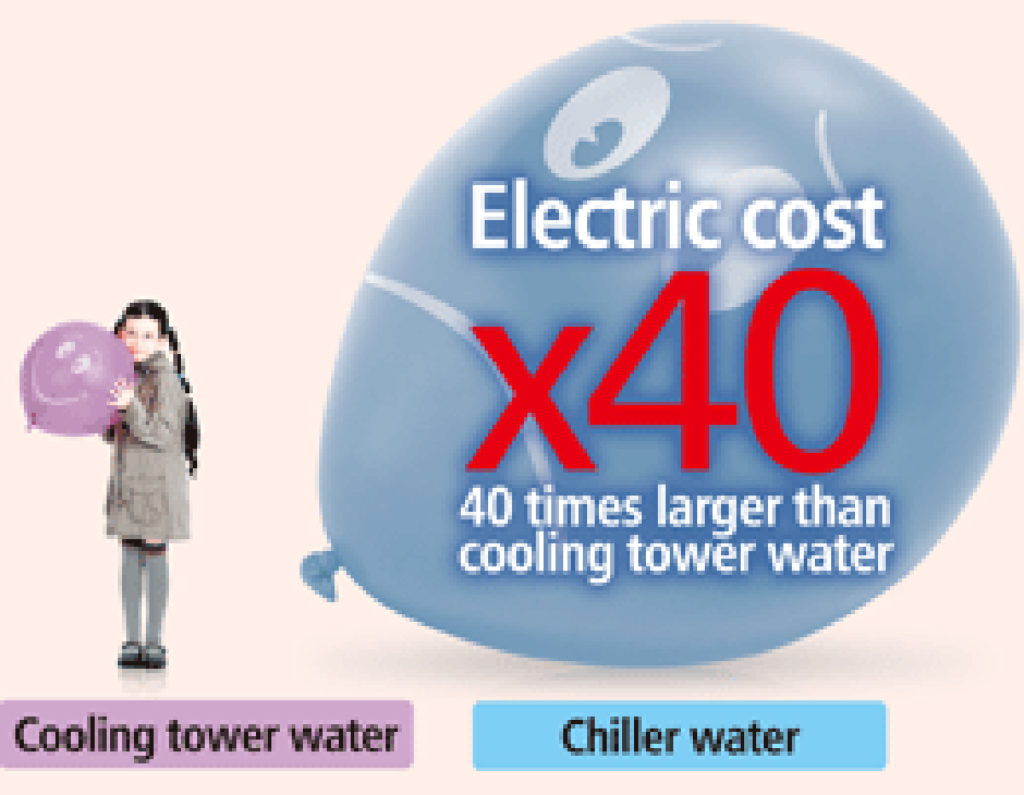
Cold water requires vast sums of money
The electric consumption of a chiller is about 40 times larger than that of a cooling tower. In spite that there is little difference in the performance of mold cooling in die casting, there is a big difference in cost performance between chiller water and cooling tower water.
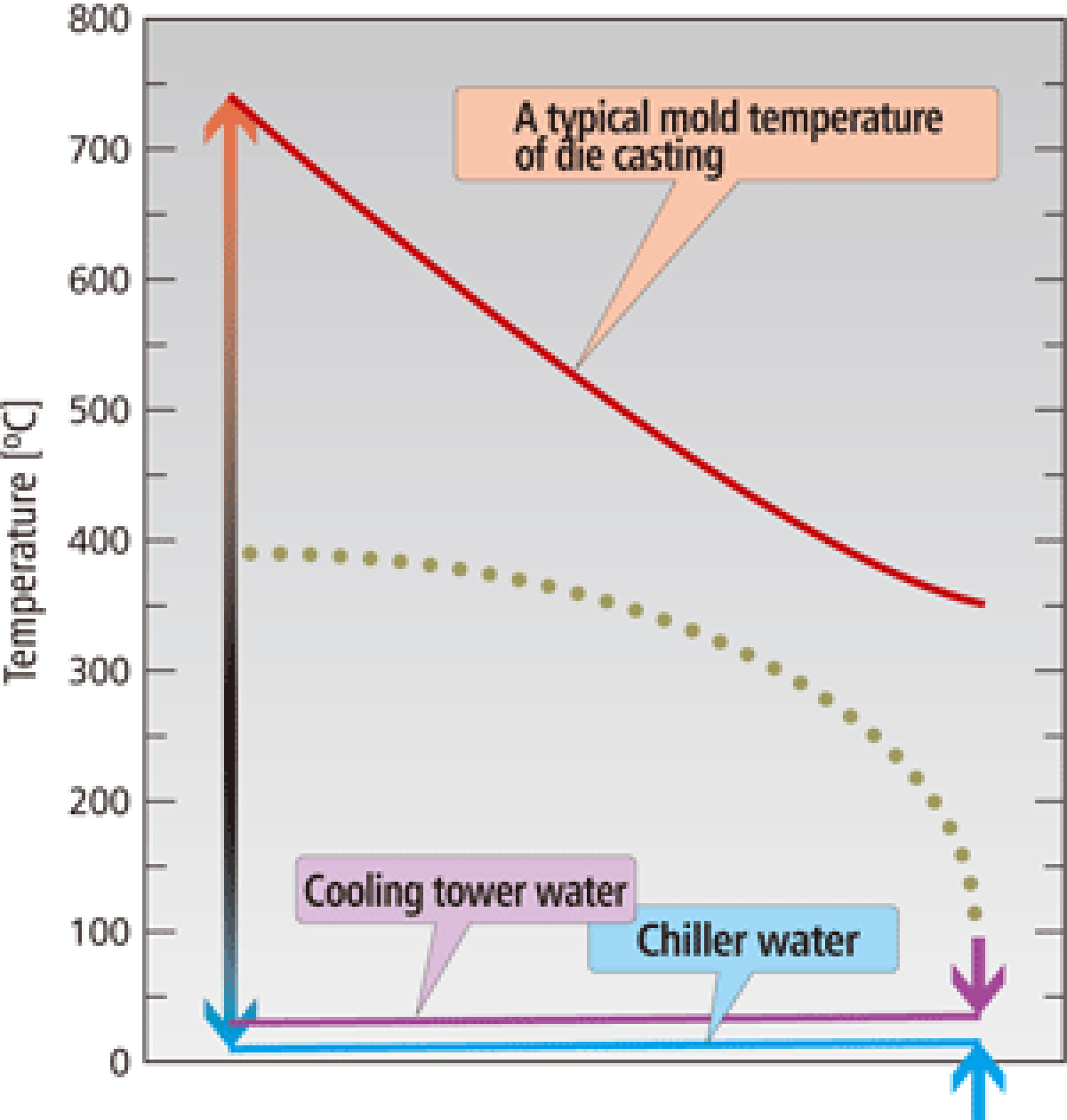
【Fig-01】
The temperature gap between the mold and the two kinds of cooling water is small.
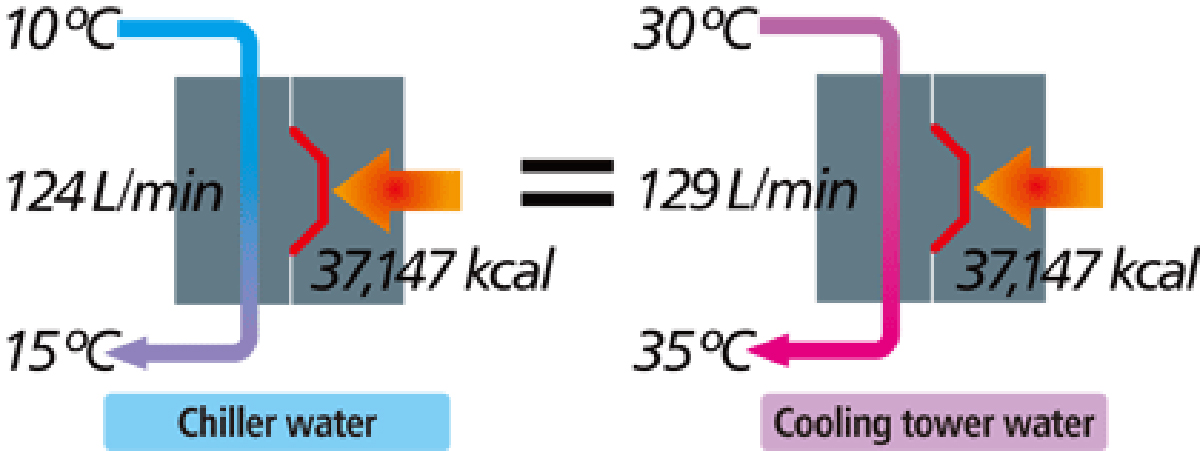
【Fig-02】
Condition
Temperature of molten aluminum at the beginning of cooling process: ℃ / Temperature of molten aluminum at the end of cooling process: 350 ℃ / Weight of aluminum per one shot: 22 kg / Cycle time: 120 sec.
Our system realizes cooling process using cooling tower water without any trouble
Functional Fluids has developed the secondary cooling system using UWT Cooling Unit as a new control method for cooling water in die casting and injection molding (【Fig-03】).
The secondary cooling system consists of two water-circulating loops: one is the cooling tower loop (the primary cooling water) and the other is the machine cooling-water (the secondary cooling water). The former loop provides cooling water to the UWT Cooling Unit from the cooling tower and the latter enclosed loop provides water to molds, chillers, molding machines and temperature regulators. The UWT Cooling Unit has been developed in order to introduce the Secondary Cooling System easily.
All you need to introduce the Secondary Cooling System are integrated into the UWT Cooling Unit. You can convert the exiting cooling system into the secondary. With this system you can use cooling water of the same high quality anywhere in the world irrespective of the original water quality.
Visible proofs of the superiority of secondary cooling system
【Fig-05】 compares the water quality, frequency of mold trouble and mold surface temperature before and after introducing the secondary cooling system. The number of mold trouble has decreased and the rise in mold surface temperature is reduced dramatically after introducing the system due to deposit free cooling water circuit.
The effect of the secondary cooling system on prevention of rust or scale is also shown in 【Fig-06】.
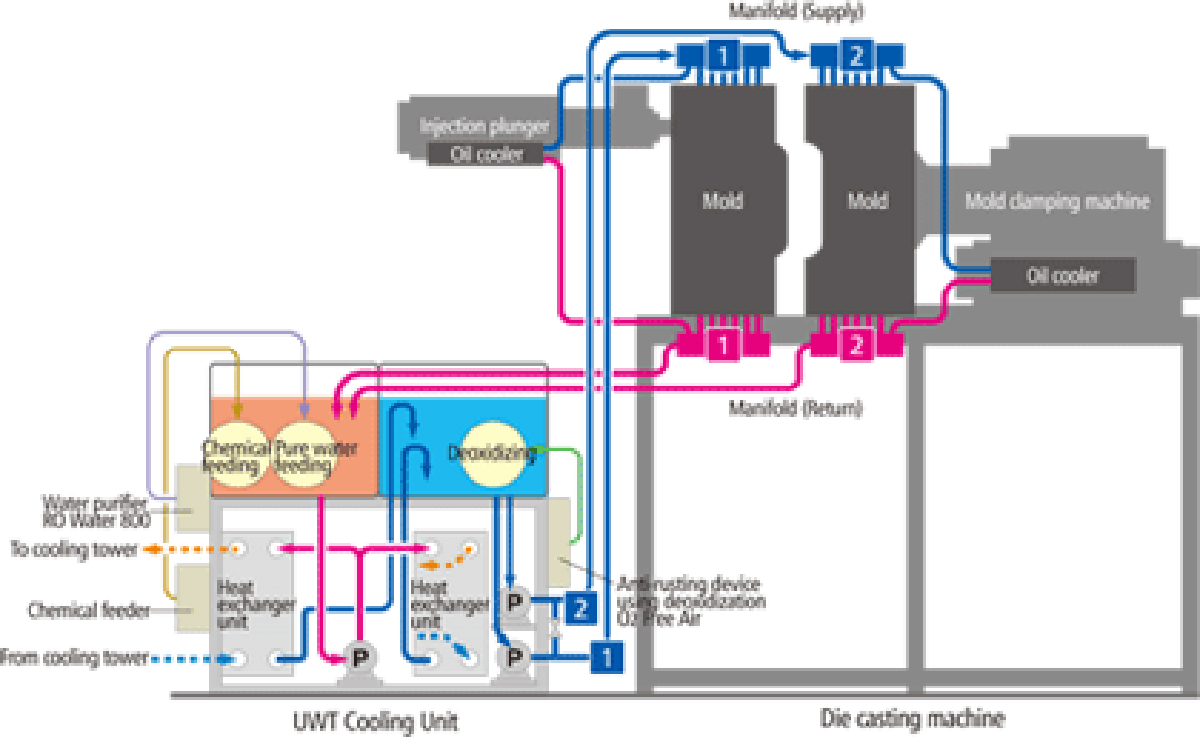
【Fig-03】
An example of the secondary cooling system which is equipped two heat exchangers and a manifold for fine temperature control.

【Fig-04】
Cooling tower water causes rust, scale or slime deposition if it is used directly to your machines. Similar problem is liable to happen in chiller water.
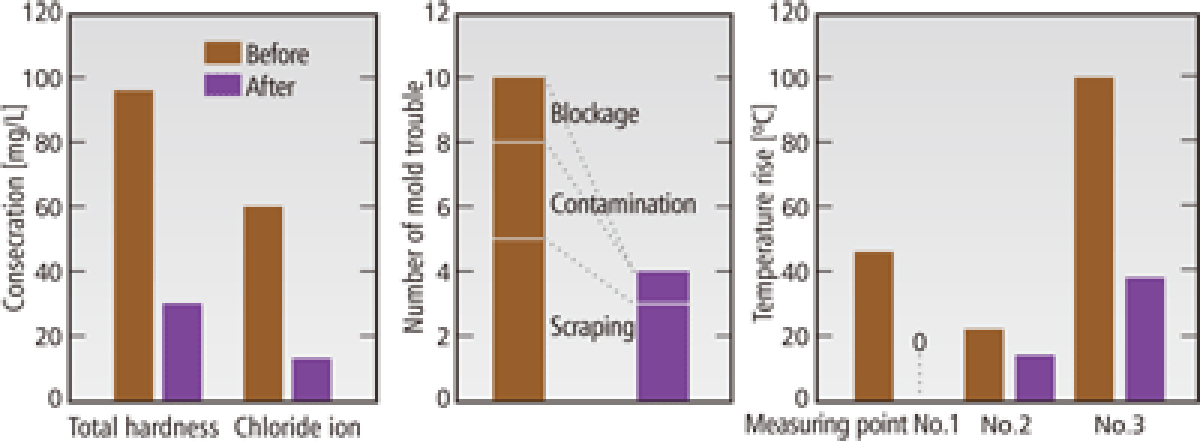
【Fig-05】
Water quality, number of mold trouble and mold surface temperature before and after introducing the secondary cooling system

【Fig-06】
Cross-section of piping
